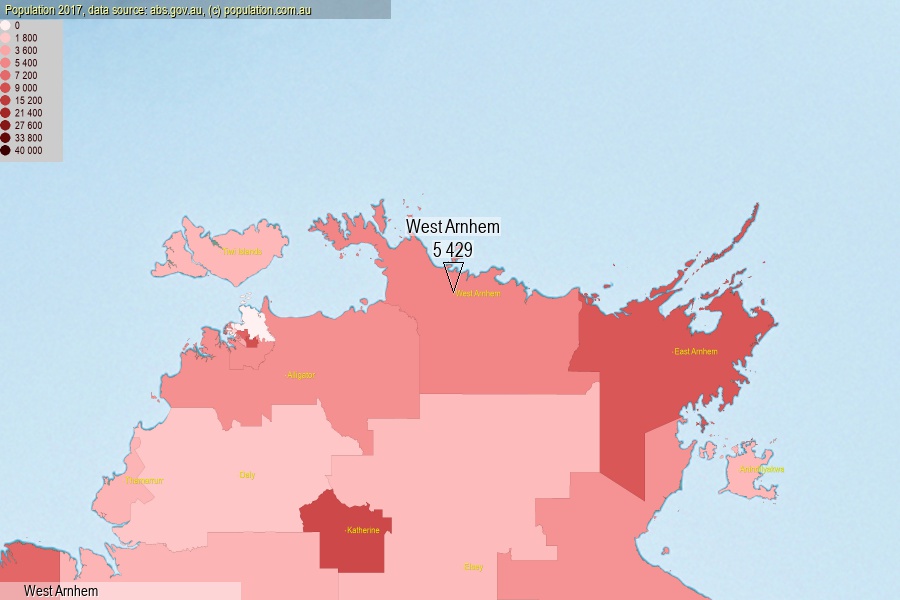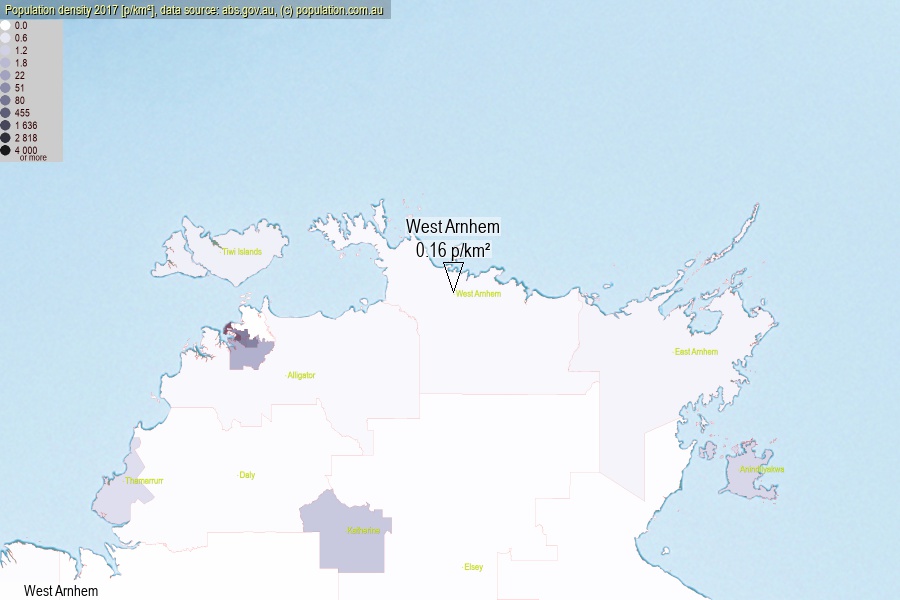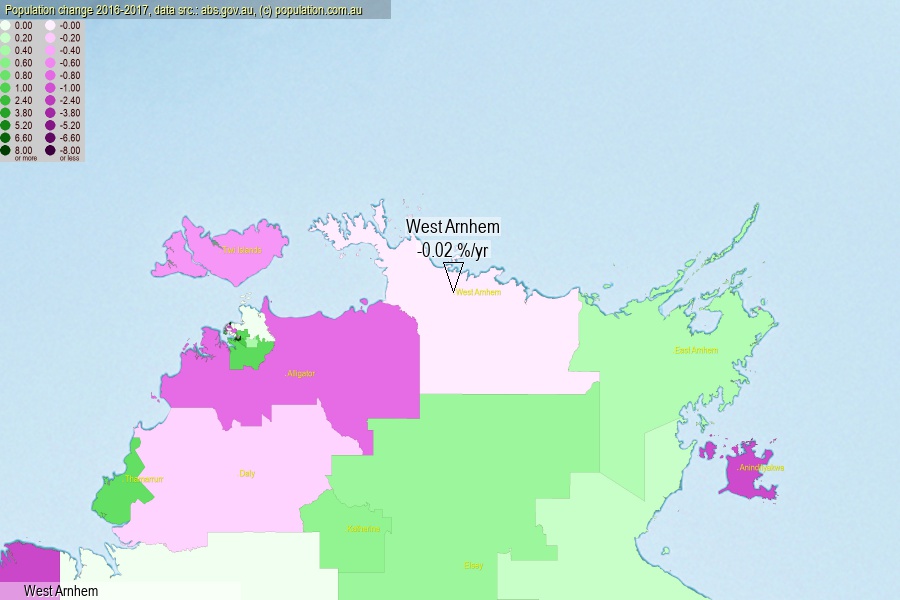 population.com.au
population.com.auLast official estimated population of West Arnhem (as Statistical Area Level 2) was 5 429 people (on 2017-06-30)[2]. This was 0.02% of total Australian population and 2.201% of NT population. Area of West Arnhem is 33 509.20 km², in this year population density was 0.16 p/km² . If population growth rate would be same as in period 2016-2017 (-0.02%/yr), West Arnhem population in 2025 would be 5 421. [0]



Click to enlarge. West Arnhem is located in the center of the images.
Population [people], population density [p./km²] and population change [%/year] [2]
View borders » (new window) [4]
[1991-1992] +0.26 %/Yr.
[1992-1993] +0.37 %/Yr.
[1993-1994] +0.72 %/Yr.
[1994-1995] +1.65 %/Yr.
[1995-1996] +2.64 %/Yr.
[1996-1997] +5.90 %/Yr.
[1997-1998] +3.69 %/Yr.
[1998-1999] +3.66 %/Yr.
[1999-2000] +3.05 %/Yr.
[2000-2001] +3.61 %/Yr.
[2001-2002] +1.42 %/Yr.
[2002-2003] +1.11 %/Yr.
[2003-2004] +1.62 %/Yr.
[2004-2005] +1.68 %/Yr.
[2005-2006] +2.25 %/Yr.
[2006-2007] +1.81 %/Yr.
[2007-2008] +2.37 %/Yr.
[2008-2009] +3.25 %/Yr.
[2009-2010] +2.35 %/Yr.
[2010-2011] +1.79 %/Yr.
[2011-2012] +1.61 %/Yr.
[2012-2013] +1.82 %/Yr.
[2013-2014] -0.98 %/Yr.
[2014-2015] -0.80 %/Yr.
[2015-2016] -1.06 %/Yr.
[2016-2017] -0.02 %/Yr.
[0] Calculated with linear interpolation from officially estimated population
[1] Read more about SA2 and Australian Statistical Geography Standard (ASGS) on abs.gov.au
[2] Population data from Australian Bureau of Statistics (Population and density: 2017; change: 2016-2017)
[3] Digital Boundaries: Australian Statistical Geography Standard (ASGS) 2016.
[4] Border coordinates are simplifyed using Ramer-Douglas-Peucker algorithm.